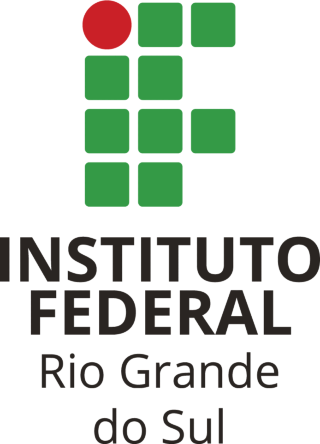| dc.contributor.advisor |
Ludwig, Rodrigo Luiz |
pt_BR |
| dc.contributor.author |
Dendena, Fernando Maldaner |
pt_BR |
| dc.date.accessioned |
2024-08-13T19:31:53Z |
pt_BR |
| dc.date.available |
2024-08-13T19:31:53Z |
pt_BR |
| dc.date.issued |
2023 |
pt_BR |
| dc.identifier.uri |
https://dspace.ifrs.edu.br/xmlui/handle/123456789/1311 |
|
| dc.description.abstract |
A soja atualmente é uma das principais culturas cultivadas no país, com
aproximadamente 40 milhões de hectares. Os sistemas de produções agrícolas estão
em frequentes transformações decorrentes de constante investimento em pesquisa,
tecnologia, inovação e produtos. Em relação a isso, a integração de bioinsumos auxilia
na recuperação de solos e aumenta a capacidade produtiva das culturas. Também,
possuem destaque como importantes aliados para o controle de pragas e doenças,
além de promover a fixação biológica de nitrogênio, aumentando produtividade,
rentabilidade e permitindo a melhor absorção de água e nutrientes do solo. Devido ao
exposto, este trabalho tem como objetivo avaliar o desempenho obtido na cultura da
soja com os diferentes produtos biológicos aplicados no tratamento de sementes, de
forma individual e em mix de produtos. O experimento foi implantado na área didática
e experimental do Instituto Federal de Ciência e Tecnologia do Rio Grande do Sul, no
Campus Ibirubá, com delineamento de blocos ao acaso, com e tratamentos e quatro
repetições, com a cultivar Neo 560. Os tratamentos constam de produtos da empresa
Biotrop e foram divididos em T1 = testemunha; T2 = Rhizotrop 2; T3 = Bio Free +
Rhizotrop 2; T4 = Biomagno + Rhizotrop 2; T5 = Bioasis + Rhizotrop 2; T6 = Rhizotrop
2 + BioFree + Biomagno; T7 = Rhizotrop 2 + BioFree + Bioasis; T8 = Rhizotrop 2 +
Biotrio; T9 = Rhizotrop 2 + BioFree + Biotrio. Foram realizadas avaliações de matéria
fresca e matéria seca de parte aérea, sistema radicular e nodulação. Além desses, foi
verificada a influência dos manejos biológicos nos componentes de produtividade da
soja, através dos parâmetros: número de legumes por planta, número de grãos por
legume, plantas por metro linear e peso de mil sementes. Com as avaliações
realizadas, pode-se observar melhor desenvolvimento em plantas com os bioinsumos,
os quais aumentaram tamanho de raízes, seguidamente de maior parte aérea e,
assim, todos os tratamentos mostrando-se superiores a testemunha em produtividade
e apresentando rentabilidade. |
pt_BR |
| dc.description.abstract |
Soy is currently one of the main crops grown in the country, with approximately
40 million hectares. Agricultural production systems are undergoing frequent
transformations, which researchers are constantly investing in technology, innovation
and products. In this regard, the integration of bioinputs helps in soil recovery and
increases the productive capacity of crops. Also, they stand out as important allies for
the control of pests and diseases, in addition to promoting the biological fixation of
nitrogen, increasing productivity, profitability and allowing better absorption of water
and nutrients from the soil. Due to the above, this work aims to evaluate the
performance obtained in the soybean crop with the different biological products applied
in seed treatment, individually and in a mix of products. The experiment was
implemented in the didactic and experimental area of the Federal Institute of Science
and Technology of Rio Grande do Sul, at Campus Ibirubá, with a randomized block
design, with 9 treatments and 4 replications, with the Neo 560 cultivar. Biotrop
company products, and were divided into T1 = control; T2 = Rhizotrop 2; T3 = BioFree
+ Rhizotrop 2; T4 = Biomagno + Rhizotrop 2; T5 = Bioasis + Rhizotrop 2; T6 =
Rhizotrop 2 + BioFree + Biomagno; T7 = Rhizotrop 2 + BioFree + Bioasis; T8 =
Rhizotrop 2 + Biotrio; T9 = Rhizotrop 2 + BioFree + Biotrio. Evaluations of fresh matter
and dry matter of aerial part, root system and nodulation were carried out. In addition
to these, the influence of biological management on soybean productivity components
was verified, through the parameters: number of pods per plant, number of grains per
pod, plants per linear meter and weight of a thousand seeds. With the evaluations
carried out, it was possible to observe a better development in plants with the bioinputs,
which increased the size of the roots, followed by a larger aerial part and made a
greater biological nitrogen fixation, thus, all the treatments were superior to the control
in productivity and profitability. |
en |
| dc.format.mimetype |
application/pdf |
pt_BR |
| dc.language.iso |
por |
pt_BR |
| dc.rights |
Open Access |
en |
| dc.subject |
Soja |
pt_BR |
| dc.subject |
Insumos biológicos |
pt_BR |
| dc.subject |
Produtividade |
pt_BR |
| dc.title |
Características produtivas da cultura da soja em resposta ao uso de bioinsumos |
pt_BR |
| dc.type |
Trabalho de conclusão de graduação |
pt_BR |
| dc.degree.grantor |
Instituto Federal de Educação, Ciência e Tecnologia do Rio Grande do Sul |
pt_BR |
| dc.degree.level |
Graduação |
pt_BR |
| dc.degree.date |
2023 |
pt_BR |
| dc.degree.local |
Ibirubá, BR-RS |
pt_BR |
| dc.degree.graduation |
Bacharelado em Agronomia |
pt_BR |
| dc.degree.department |
Campus Ibirubá |
pt_BR |



